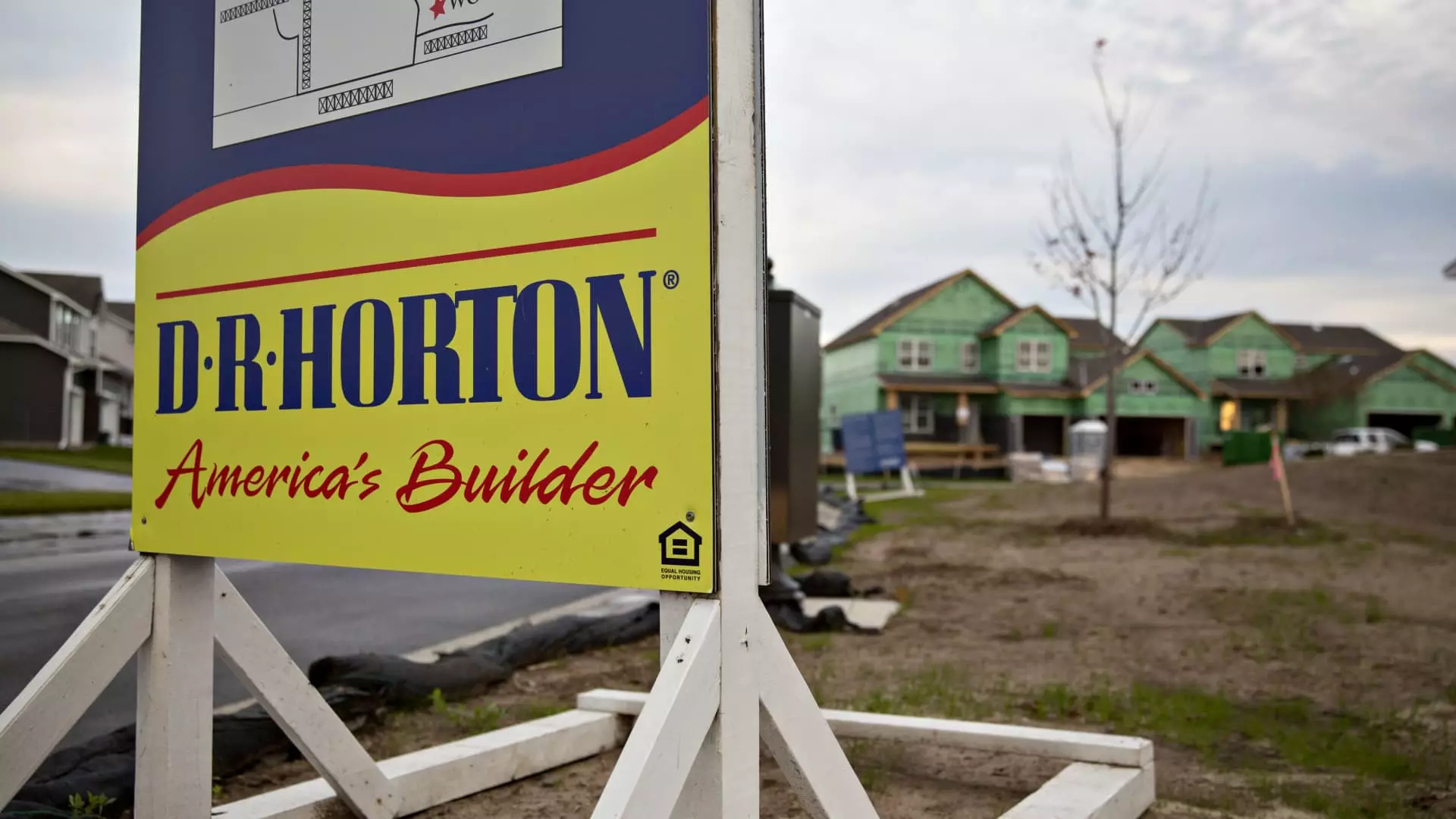The ongoing trajectory of interest rates is crucial for both consumers and the broader economy, particularly in the housing market. Recent financial disclosures from D.R. Horton, a dominant player in homebuilding based in Arlington, Texas, have highlighted mounting concerns. The company reported quarterly earnings that fell short of analyst expectations and offered a less-than-encouraging outlook for future performance, leading to a significant 11% drop in its stock prices. Such declines are alarming not only for the company but also for an industry heavily reliant on interest rate stability.
David Auld, CEO of D.R. Horton, noted that interest rate volatility is prompting potential homebuyers to adopt a wait-and-see approach. Although mortgage rates have dipped from their peak earlier this year, Auld emphasized that many buyers might be anticipating even lower rates in 2025. This sentiment underscores consumer hesitancy in the current market—a factor likely to stall home purchases and slow overall market growth. As of now, the 30-year fixed mortgage rate hovers at around 7%, a decrease from 8% recorded last October. However, given the recent increases in rates, many buyers are understandably cautious about entering the market.
It is critical to understand the intricate relationship between mortgage rates and Treasury yields. Currently, mortgage rates are heavily influenced by the yield on the 10-year Treasury note. As bond prices fluctuate, yields tend to rise, further complicating the landscape for prospective homebuyers. Since the Federal Reserve initiated its rate-cutting strategy in September, overall market conditions have evolved in unexpected ways, leaving many to question the central bank’s future direction. This degree of uncertainty adds another layer of complexity for buyers who may be unsure of whether now is the right time to commit to a mortgage.
The ripple effects of D.R. Horton’s disappointing earnings are being felt industry-wide. Other major homebuilders, such as Toll Brothers, Pulte Group, and KB Home, saw their stock valuations decrease by roughly 4% following the news. Furthermore, the S&P Homebuilders ETF, which tracks essential players in the homebuilding space, also lost ground, diminishing by 3%. Even prominent home improvement retailers like Home Depot and Lowe’s were affected, with both companies’ shares dropping approximately 2%.
D.R. Horton’s projections for revenue between $36 billion and $37.5 billion for the fiscal year ending in September 2025 do not align with the consensus estimate of $38.91 billion, revealing the potential headwinds in the market. This scenario sets the stage for a cautious outlook among investors and consumers alike. As the company navigates these choppy waters, a broader examination of the financial landscape reveals that without a stabilization in interest rates, both consumers and the housing sector may face considerable challenges. Only time will tell how these factors will converge to shape the future of homebuying in the United States.

